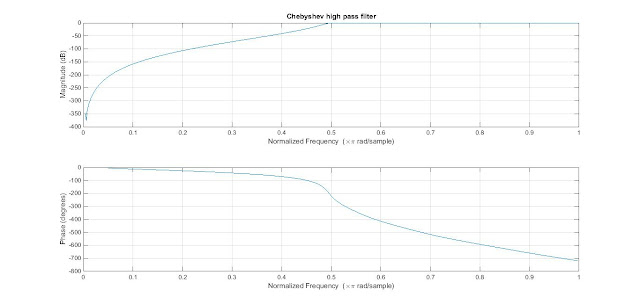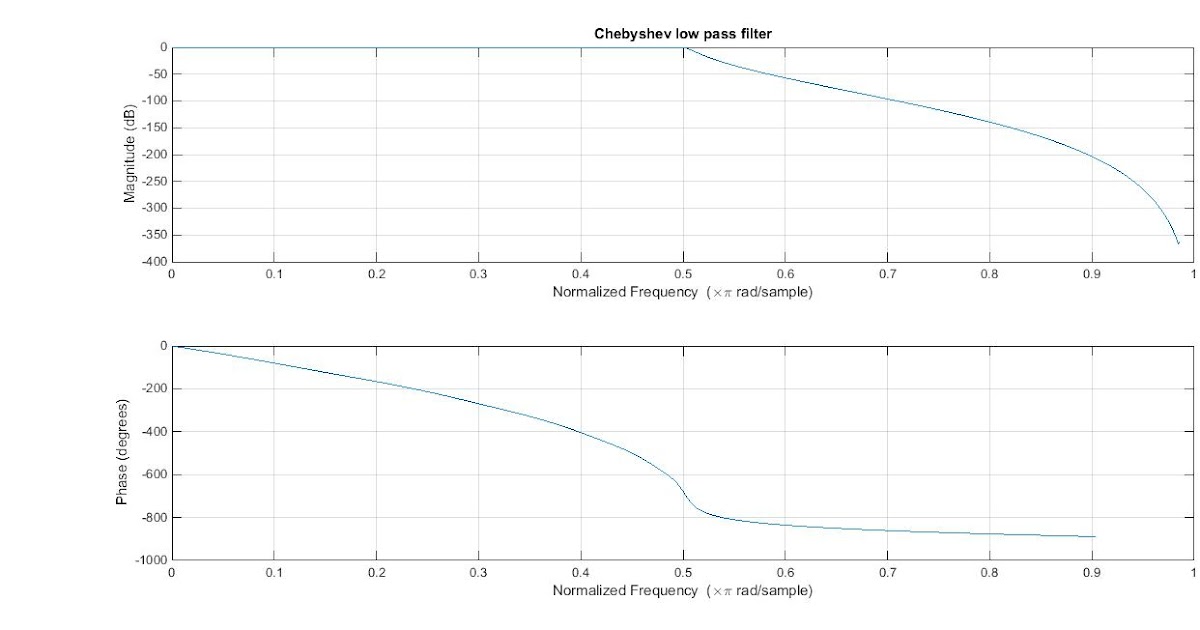

# Normalized frequency argument for cheby1 The plot shows just the pass band, but you can change the arguments of the xlim and ylim functions to see more. Here's a complete script, followed by the plot that it generates. (If you increase the order to 6, then the gain at 2 Hz is approximately -103.) In particular, I get a gain of approximately -78 dB at 2 Hz. So it appears that the specification that you give, "Sampling frequency = 32Hz, Fcut=0.25Hz, Apass = 0.001dB, Astop = -100dB, Fstop = 2Hz, Order of the filter = 5", are not compatible with a Type I Chebyshev filter. transition band width, Astop, Fstop, etc) are determined. Once those three parameters are chosen, all the other characteristics # Cutoff frequency relative to the Nyquist In your case, you could write something like fs = 32 # Sample rate (Hz)įcut = 0.25 # Desired filter cutoff frequency (Hz) The third argument is wn, the cutoff frequency expressed as a fraction of the Nyquist frequency.

I don't know how to convert these parameters and provide them to the function in Scipy. But I don't know how to create a filter which has the same parameters as mentioned above. How To apply a filter to a signal in python (Wn is thus in half-cycles / sample.) For analog filters, Wn is an angular frequency (e.g. For digital filters, Wn is normalized from 0 to 1, where 1 is the Nyquist frequency, pi radians/sample.

For Type I filters, this is the point in the transition band at which the gain first drops below -rp. Specified in decibels, as a positive number.Ī scalar or length-2 sequence giving the critical frequencies. The maximum ripple allowed below unity gain in the passband. Here N:The order of the filter btype: type of filter, in my case, it is 'lowpass' analog=False, because the data is sampled, so it is digital output: specifies the type of output. cheby1(N, rp, Wn, btype='low', analog=False, output='ba') The parameters required by this function are different. I found some materials help me understand these parametersīut when I take a look at the 1. Sampling frequency = 32Hz, Fcut=0.25Hz, Apass = 0.001dB, Astop = -100dB, Fstop = 2Hz, Order of the filter = 5. In this paper, they use a low-pass Chebyshev type-I filter on the raw data. I am reading a paper, trying to reproduce the results of the paper.


 0 kommentar(er)
0 kommentar(er)
